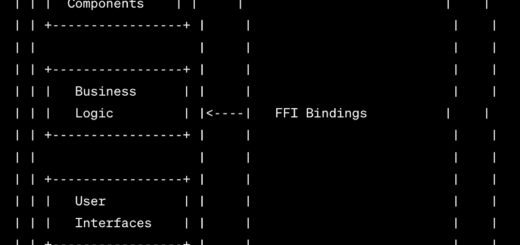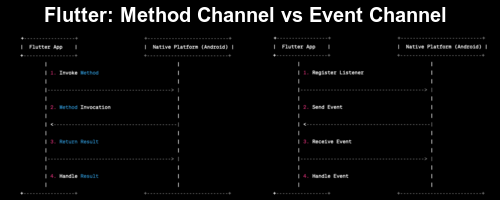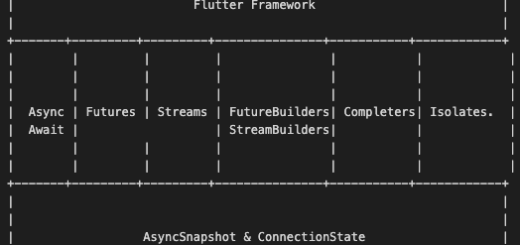Protecting Financial Data in Your Flutter FinTech App: A Deep Dive into Encryption
Flutter is now one of the most common choices for emerging startups. Even big corporations like Maersk and Google are porting most of their applications onto the Flutter platform. Multiple FinTech applications are built in Flutter instead of other hybrid technologies such as React Native, Xamrin, etc.
In this article, we will discuss FinTech applications in Flutter and the critical role of data encryption. We will also highlight top encryption libraries and strategies to ensure your user’s financial data remains secure.

Why encryption matters in Flutter FinTech applications
FinTech apps like banking, investment, or payment processes deal with a lot of sensitive and confidential data- user credentials, transaction history, banking information, and more. Ensuring this information is not just required for user experience but it’s a legal and ethical obligation. Companies have been fined in the billions for having weak security practices and allowing hackers to steal their customer’s data.
Encryption is one of the core fundamentals for any FinTech application. It converts any plain readable sensitive information into an unreadable encrypted format, protecting it from unauthorized access and ensuring compliance with stringent data protection regulations.
Strategies for encrypting your Flutter FinTech app
1. Secure user authentication
When a user enters their login information i.e. username and password, the app encrypts this information before transmitting it to the server for authentication. This prevents attackers from intercepting and deciphering the login credentials of your users.
2. Protecting payment card data
If your Flutter application deals with digital cards such as credit cards, debit cards, or prepaid cards, it should use encryption to safeguard its information. When your users add their credit card information to the application, you should encrypt the data and store it securely. During the transaction, you should share the encrypted card information with the payment processors. This ensures that the card information is neither stored nor transmitted in plain text.
3. Data-at-Rest Encryption
Any financial institution must encrypt all of its user’s data on its server. This includes account balances, transaction histories, and personal information. Thus, even if any unauthorized access occurs, your user’s information will be safe since without the encryption keys, that data will remain indecipherable.
4. End-to-End Encryption
End-to-end encryption is one of the best ways to ensure that your FinTech Flutter app provides the highest level of data security. It is widely used by social media apps such as Telegram, WhatsApp, etc. In this technique, the messages or attachments are first encrypted on the sender’s side and decrypted only on the recipient’s side. Even the service provider doesn’t know the details of the transmitted content. This ensures that data remains highly encrypted and secure.
5. Secure Data Transmission
Your FinTech application should use encryption (e.g. SSL/TLS) for data transmission between its servers and the Flutter app. An SSL certificate from a reputed website such as Godaddy, Comodo, DigiCert, etc., will protect your user’s data during transmission by encrypting it.
6. Multi-factor Authentication (MFA)
Multi-factor authentication or MFA in short is another way of enhancing your user’s credentials. In addition to the password for login, your users must provide a one-time code from an MFA app (Authy, Google Authenticator, Microsoft Authenticator, etc.). Using MFA protects your users since even if your user’s account credentials are somehow compromised, without the one-time code from an MFA app, the attacker can’t access any of your user’s data. This combination of encryption and an MFA enhances your user’s account information.
7. Secure File Storage
If your FinTech application allows the storage of sensitive financial documents on your user’s device then you should always encrypt them before the storage. This way, even if your user’s device falls into the wrong hands, they won’t be able to read any of those sensitive documents. Any document either uploaded by the user or generated by your servers should also be encrypted before storing them on your servers.
8. Compliance and Regulatory Encryption
If your FinTech firm operates in Europen Union, then it should encrypt its customer’s data to comply with the General Data Protection Regulation (GDPR). These regulations lay the guidelines for the extent of encryption required to safeguard your user’s information.
Real-World Encryption Examples in FinTech Apps
1. WhatsApp: End-to-End Encryption
WhatsApp uses end-to-end encryption for all messages, voice and video calls. This means that only the sender and recipients know the content of their conversations. This ensures privacy and security of user’s data and it is one of the most important reasons for making WhatsApp one of the most trusted communication platforms in the world.
2. Online Banking: SSL/TLS Encryption
All banking and financial institutions use SSL/TLS encryption to secure their online banking transactions. Whenever a user accesses their website or app, all the data transmitted between the user’s device and server is encrypted. This prevents unauthorized access, eavesdropping, and data tampering of the information on either end, providing peace of mind to customers.
3. E-Commerce: Credit Card Encryption for Secure Payments
E-commerce websites handle lots of sensitive information, including credit card information. To protect customer’s information, payment gateways on these e-commerce websites, use strong encryption protocols. These protocols ensure the secure transmission of credit card data during online purchases. If the websites store credit card information for faster access later, they encrypt the credit card data before storing it.
4. Healthcare: HIPPA Compliance and Data Encryption
For healthcare websites and applications, the Health Insurance Portability and Accountability Act (HIPAA) mandates stringent data protection. Healthcare organizations are required to encrypt patients’ electronic health records (EHRs), patient information, and all medical data. This ensures patients’ privacy and encryption plays a crucial role in it.
Key Encryption Libraries in Flutter
We have created a list of top encryption libraries you should use to secure your FinTech application:
1. pointycastle
It’s a comprehensive cryptography library providing a wide range of cryptographic algorithms and tools for secure data encryption. Check it out in pub.dev.
2. Encrypt
Another cryptographic library that provides simple and intuitive APIs for data encryption and decryption. It supports popular encryption algorithms like RSA and AES. Check it out in pub.dev.
3. flutter_secure_storage
This library is used to store user’s sensitive data on their devices. It encrypts the data before storing the information and decrypts it only when required by the application. This ensures that even if the device gets compromised, the data remains protected. Check it out in pub.dev.
4. hive
Hive is a lightweight and fast local database for your Flutter app. It provides a built-in encryption for data. Check it out in pub.dev.
5. sqflite_sqlcipher
This project is the fork of sqflite_common which provides a SQLFlite database for local storage of data on your user’s devices. This library adds encryption functionality to the traditional library, making it suitable for your needs. Check it out in pub.dev.
In the FinTech ecosystem, trust and security are non-negotiable. Encryption plays an important role in safeguarding the sensitive data of your Flutter FinTech application. By using strong encryption practices, FinTech companies can provide users with assurance that their financial information is safe and secure. Remember, in FinTech, security isn’t just a feature; it’s the foundation of trust.











